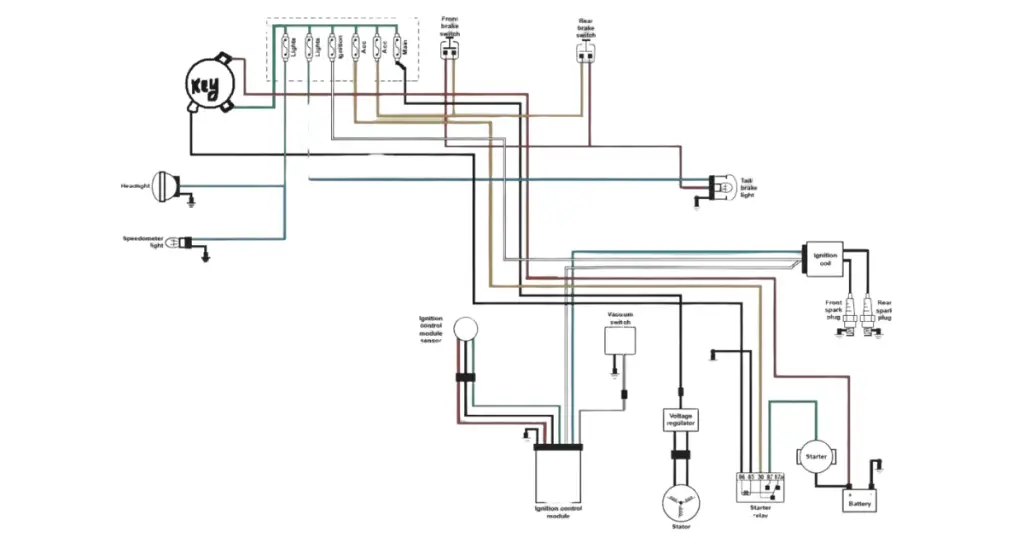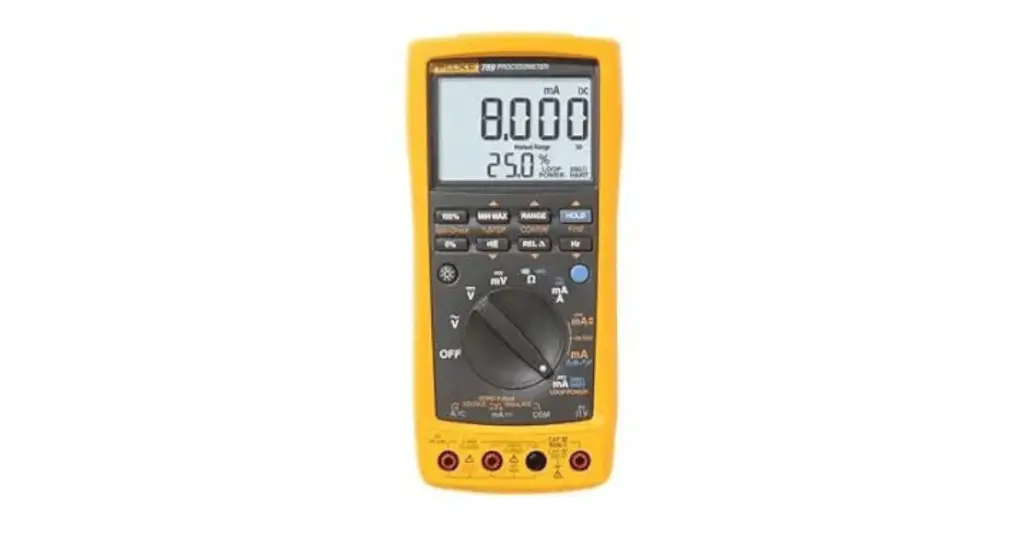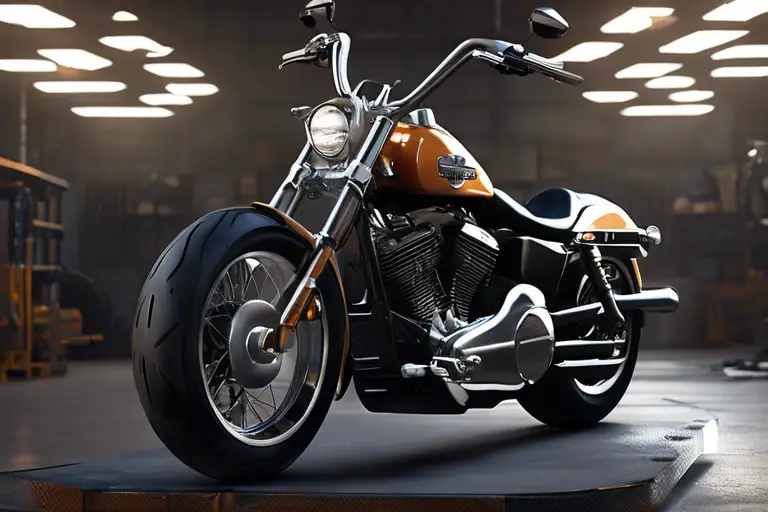Last Updated on December 6, 2023 by Pittalks
Every Harley Davidson motorcycle enthusiast knows the thrill of riding down an open road, wind in the hair, and the purr of the engine underfoot. But, what happens when your beloved Harley suddenly loses its spark? This comprehensive guide takes you through a methodical approach to troubleshoot and resolve no spark issues in your Harley Davidson motorcycle, ensuring your smooth and reliable rides continue unabated.
Understanding the Ignition System
Before you dive into troubleshooting, it’s crucial to grasp the basics of your motorcycle’s ignition system. This system is a complex mix of components responsible for providing the spark required to ignite the fuel-air mixture in the engine’s combustion chamber, generating power for smooth rides.
Ignition System Principal Components

The primary components of the ignition system include:
- Ignition Switch (Kill Switch): This switch is responsible for turning the motorcycle’s electrical system on and off. It is critical for starting the engine and ensuring its correct operation.
- Battery: The battery supplies power to the ignition system, including the ignition switch, ignition coil, spark plugs, and the ignition module.
- Ignition Coil: The ignition coil transforms the battery’s voltage into a higher voltage necessary to create a spark at the spark plugs.
- Spark Plugs: Spark plugs ignite the fuel-air mixture in the combustion chamber, generating power for the motorcycle.
- Ignition Control Module (ICM): The ICM manages the timing and sequence of the ignition system, ensuring that the spark plugs fire at the correct time.
- Crank Position Sensor (CPS): The CPS monitors the crankshaft’s position and speed, providing critical information to the ICM to determine the proper timing for spark generation.
Understanding these components and their functions will help you identify potential issues more effectively during the troubleshooting process.

Primary Reasons for A No Spark Condition
Several common issues can cause a no spark problem in a Harley Davidson motorcycle:
- Faulty Ignition Switch: A worn or damaged ignition switch may not provide power to the ignition system, preventing the motorcycle from starting.
- Weak or Dead Battery: A weak or dead battery may not have enough power to supply the ignition system, resulting in a no spark condition.
- Damaged or Faulty Ignition Coil: A damaged or faulty ignition coil may not produce the necessary voltage for spark generation, leading to a no spark issue.
- Worn or Damaged Spark Plugs: Worn or damaged spark plugs may not create a sufficient spark, causing the motorcycle not to start.
- Faulty Ignition Control Module: A faulty ignition control module may not provide the proper timing and sequence for spark generation, leading to a no spark condition.
- Damaged or Faulty Crank Position Sensor: A damaged or faulty CPS may not provide accurate information to the ICM, resulting in incorrect spark timing.
No Spark Troubleshooting Guide
If your Harley Davidson motorcycle is experiencing a no spark condition, follow these steps to diagnose and resolve the problem:

Inspect The Ignition Switch (Kill Switch)
First, check the ignition switch for any signs of wear or damage. Verify that it is providing power to the ignition system using a multimeter. If necessary, replace the ignition switch.
Check The Battery
Next, check the battery for signs of weakness or damage. Ensure that it has sufficient power to supply the starter and ignition system. If necessary, charge or replace the battery.
How To Check Harley Davidson Battery Voltage
To measure the battery’s voltage:
- Turn off your motorcycle and remove the seat to access the battery.
- Use a multimeter to measure the battery’s voltage. A fully charged battery should read around 12.6 volts.
- If the voltage is below 12.6 volts, charge the battery and retest.
- If the battery still fails to hold a charge, replace it.
Test The Ignition Coil
Using a multimeter, test the ignition coil to ensure that it’s producing the necessary voltage for spark generation. If the ignition coil is malfunctioning, replace it.
How To Test Harley Ignition Coil Primary
To test the Harley ignition coil:
- Locate the ignition coil on your motorcycle. Consult your owner’s manual if you’re unsure of its location.
- Disconnect the spark plug wires from the ignition coil.
- Use a multimeter to measure the resistance between the primary and secondary coil windings. Refer to your owner’s manual for the correct resistance values.
- If the resistance values are outside of the specified range, replace the ignition coil.
Inspect and Replace Spark Plugs (Spark Plug Wires if Necessary)
Inspect the spark plugs for signs of wear or damage, and replace them if necessary. Additionally, check the spark plug wires for any signs of damage or wear, and replace them if required.
How To Check Harley Spark Plugs
To inspect and replace Harley’s spark plugs:
- Remove the spark plug wires and unscrew the spark plugs using a spark plug socket.
- Inspect the spark plugs for damage, fouling, or excessive wear.
- If the spark plugs are damaged or excessively worn, replace them with new ones.
- If the spark plugs are fouled, clean them using a wire brush and reinstall.
Test The Ignition Control Module
Using a multimeter, test the ICM to ensure that it is providing the correct timing and sequence for spark generation. If the ICM is malfunctioning, replace it.
How To Test a Harley Ignition Module
To test the ICM:
- Locate the ICM on your motorcycle. Consult your owner’s manual if you’re unsure of its location.
- Disconnect the wiring harness from the ICM.
- Use a multimeter to check the resistance between the terminals of the ICM. Refer to your owner’s manual for the correct resistance values.
- If the resistance values are outside of the specified range, replace the ICM.
In conclusion, understanding the core components of your Harley Davidson’s ignition system and knowing how to methodically troubleshoot each can help you tackle any no spark issue you might face. By following the steps outlined in this guide, you can ensure a smooth and uninterrupted ride.
Frequently Asked Questions
Yes, a bad ignition switch can cause a no spark issue since it may not provide power to the ignition system, preventing the motorcycle from starting.
A weak battery can cause a no spark issue as it may not have enough power to supply the ignition system, resulting in a no spark condition.
Yes, a faulty ignition module can cause a no spark condition as it may not provide the correct timing and sequence for spark generation.
It’s recommended to replace your Harley Davidson’s spark plugs every 10,000 to 15,000 miles or as specified in your motorcycle’s owner’s manual. However, it’s essential to inspect your bike and spark plugs regularly and replace them if signs of wear or damage are present.

